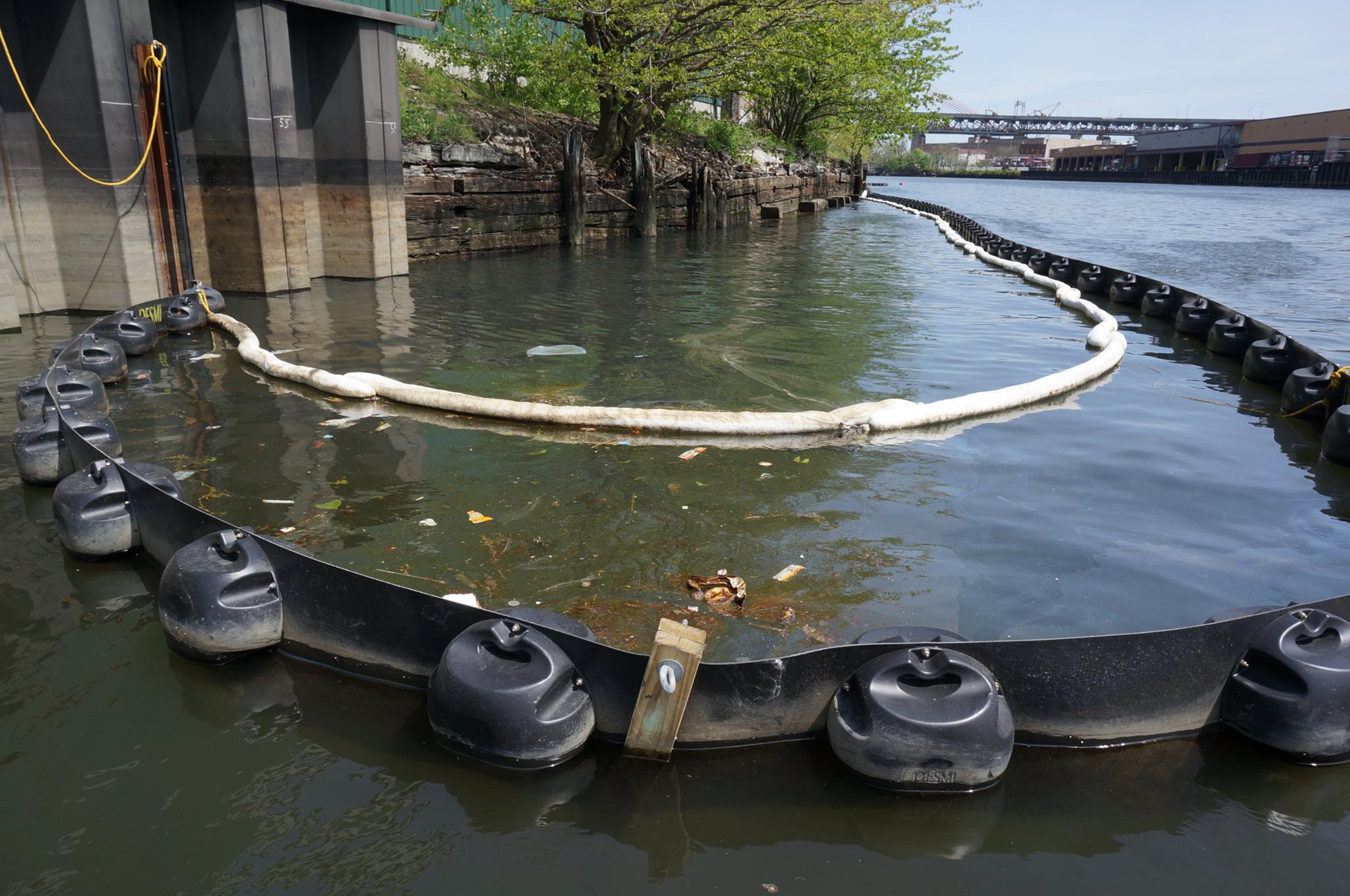There are 3 active oil spills on Newtown Creek

Two layers of booms help to contain oil from entering the main body of Newtown Creek and eventually New York Harbor. Photo courtesy of Newtown Creek Alliance
Three properties along Newtown Creek are actively discharging oil into the waterway, further polluting the already toxic federal Superfund site and possibly undoing years of mitigation efforts.
Two of the sites, Manhattan Polybag and Morgan Oil, were former oil storage facilities in Greenpoint. The third, Pratt Oil, was a refinery in Queens.
Ian Beilby, New York State Department of Environmental Conservation project manager for the creek, confirmed that he has witnessed some form of petroleum entering the water from all three sites at a Newtown Creek Community Advisory Group meeting on Wednesday. The state is addressing the problem, he said.
